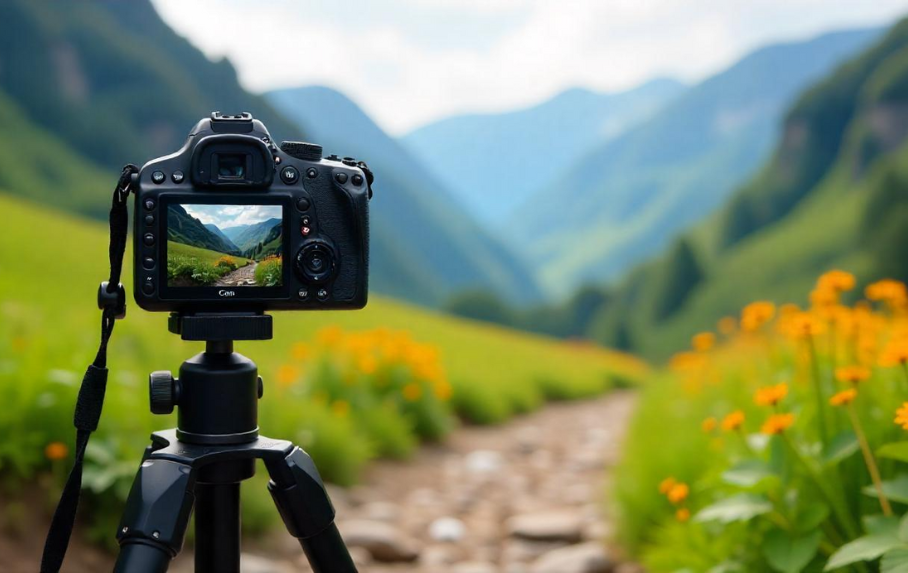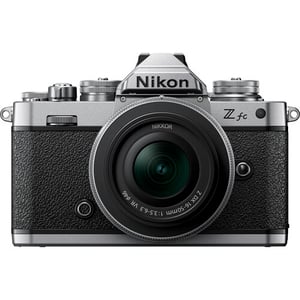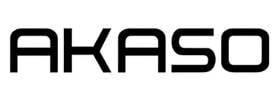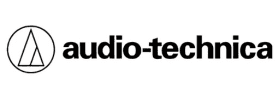
Best Camera for Photography Leave a comment
Photography is as much an art as it is a science, and choosing the right equipment plays a crucial role in capturing moments that truly resonate. No matter whether you are a novice or an expert, the choice of the right camera for photography depends on several parameters such as your style, the purse price, and individual requirements.
In this article, we’ll explore what makes a camera stand out, review popular camera types, and answer common questions like “what is the best camera for photography?” in an effort to help you make an informed decision.
Understanding Your Needs
It is useful first to give some thought to what kind of photography that you like. Are you into landscape photography, portrait sessions, wildlife, or perhaps street photography? Each genre may require different features:
- Sensor Quality & Resolution: A high-resolution sensor is vital for capturing intricate details.
- Low-Light Performance: For night or indoor shoots, a camera with excellent ISO performance is a must.
- Autofocus & Speed: Fast and accurate autofocus is fundamental, if not essential, especially for tracking moving objects.
- Ergonomics & Build Quality: Comfort and robustness can have a big impact on how comfortable your shooting experience is during long practices.
Popular Camera Types
But when it comes to the top cameras for photos, there are so many choices on the market:
DSLR Cameras
DSLRs have long been a favorite among photographers for their robust build and optical viewfinders. They have a large variety of lenses and accessories which are customizable to specific photography needs.
Mirrorless Cameras
Mirrorless models have gained tremendous volume for their small form factor, high frame rates, and rich video functions. Many professionals now prefer these cameras for their innovative features without compromising on image quality.
Compact & Bridge Cameras
One niche with high-end capability and without the need for a full switch to portable (i.e., taking advantages of first-generation network attachment), is high-end compact or ‘bridge’ cameras for those who want portability but don’t want to give up performance capabilities. They are ideal for travel or everyday photography where carrying bulky equipment is impractical.
Top Recommendations
Though the caption “best camera for photography” may lead one to assume an all-encompassing answer, in fact, there is no standard “best camera” for everybody because the best camera will depend on individual needs. Below are some models that have been widely lauded:
- High-End Mirrorless Options: Devices such as the Canon EOS R5 or the Sony A7R IV are well known for their high image quality and are a favorite of professionals.
- Versatile DSLRs: Cameras such as the Nikon D850 continue to impress with their balance of performance and reliability.
- Innovative Compacts: Portability has been a factor in the design considerations of cameras such as the Fujifilm X100V, providing a blend of vintage appeal and contemporary functionality.
Best Cameras for Photography
The following are a few leading models, consistently performing at the top of the photography camera rankings. Every entry describes what makes it unique, leaning on practical findings about real-world gain and practical gain, and not just technicalities.
Nikon Zfc (SKU:1675)
- Retro-Inspired Design: The Nikon Z fc’s vintage look harks back to classic Nikon film cameras, yet it’s packed with modern mirrorless technology.
- APS-C Sensor: The same excellent image quality in a miniaturized form factor, which suits street or travel photography.
- Intuitive Controls: Physical dials for ISO, shutter speed, and exposure compensation allow a tactile shooting experience.
Nikon Zfc Specs (SKU:1675)
| Lens Mount | Nikon Z |
| Sensor Resolution | Actual: 21.51 MP Effective: 20.9 MP (5568 x 3712) |
| Image Sensor | 23.5 x 15.7 mm (APS-C) CMOS |
| Image Stabilization | Digital (Video Only) |
| ISO Range | 100 to 51,200 (Extended: 100 to 204,800) |
| Video Resolution | UHD 4K (3840 x 2160) up to 30 fps Full HD (1920 x 1080) up to 100 fps |
| Screen | 3″ Tilting Touchscreen LCD |
| Viewfinder | Electronic OLED, 2.36M dots |
| Autofocus | 209 Phase-Detection Points |
| Battery Life | Approx. 300 Shots |
| Weight | 390 g (Body Only) |
Why It Stands Out
The Nikon Z fc combines style with substance. Most suited for photographers looking to carry something but being unable to give up image quality. The growing lens library of the Z mount provides many versatile lenses, ranging from wide-angle prime lenses to telephoto zooms. This camera is particularly attractive to users who value a classic camera look and feel with modern performance.Nikon D630 (SKU:1540)
Key Features
- Full-Frame Sensor (FX Format): A powerful full-frame sensor that captures detailed images with good low-light performance.
- Ergonomic Design: Comfortable grip and logical button layout for easy handling.
- Reliable Autofocus System: Multiple AF points ensure quick and accurate focus.
Nikon D630 Specs (SKU:1540)
| Type | DSLR Camera |
| Lens Mount | Nikon F |
| Sensor Resolution | Actual: 24.7 MP Effective: 24.3 MP (6016 x 4016) |
| Image Sensor | 35.9 x 24 mm (Full-Frame) CMOS |
| ISO Range | 100 to 6400 (Extended: 50 to 25,600) |
| Shutter Speed | 1/4000 to 30 sec, Bulb Mode |
| Autofocus | 39-Point Phase Detection |
| Viewfinder | Optical, 0.7x Magnification |
| Screen | 3.2″ Fixed LCD (921K dots) |
| Video Recording | Full HD 1080p |
| Storage | Dual SD/SDHC/SDXC Slots |
| Wireless | Wi-Fi (Adapter Required) |
| Battery Life | Approx. 900 Shots |
| Weight | 760 g (Body Only) |
Why It Stands Out
The Nikon D630 provides an affordable entry into full-frame photography, making it a great option for beginners looking to advance their skills.Olympus OM-D E-M10 Mark Series (SKU:V207132SU000)
Key Features
- Micro Four Thirds Sensor: Sharp images with a diverse selection of lenses.
- In-Body Image Stabilization: Reduces blur and improves low-light performance.
- Compact and Lightweight Body: Ideal for travel and daily use.
Olympus OM-D E-M10 Mark Series Specs (SKU:V207132SU000)
| Lens Mount | Micro Four Thirds |
| Sensor Resolution | Actual: 21.8 MP Effective: 20.3 MP (5184 x 3888) |
| Image Sensor | 17.4 x 13 mm (Four Thirds) MOS |
| Image Stabilization | Sensor-Shift, 5-Axis |
| ISO Range | 100-25,600 (Extended) |
| Video Resolution | UHD 4K (3840 x 2160) at 30 fps Full HD 1080p at 60 fps |
| Memory Card Slot | Single Slot: SD/SDHC/SDXC (UHS-II) |
| Wireless | Wi-Fi, Bluetooth 4.2 |
| Display | 3.0″ Tilting Touchscreen LCD (1.04M dots) |
| Battery Life | Approx. 360 shots (BLS-50) |
| Weight | 335g (Body Only) |
Why It Stands Out
Highly portable without sacrificing too much image quality, making it a top choice for street and travel photographers.Canon EOS R10 (SKU:5331C016)
Key Features
- APS-C Mirrorless: High-quality sensor with advanced autofocus.
- Fast Autofocus and Shooting Speed: Great for action shots.
- Articulating Touchscreen: Versatile shooting angles.
Canon EOS R10 Specs (SKU:5331C016)
| Lens Mount | Canon RF |
| Sensor Resolution | Actual: 25.5 MP | Effective: 24.2 MP (6000 x 4000) |
| Image Sensor | 22.3 x 14.9 mm (APS-C) CMOS |
| Image Stabilization | Digital (Video Only) |
| ISO Range | 100-32,000 (Expandable to 51,200) |
| Video Recording | UHD 4K (30/60 fps), Full HD 1080p (120 fps) |
| Autofocus | Dual Pixel CMOS AF II | 651 Points |
| Continuous Shooting | Up to 23 fps (Electronic) |
| Display | 3.0″ Vari-Angle Touchscreen LCD |
| Viewfinder | 2.36M-dot OLED Electronic |
| Memory Slot | Single SD/SDHC/SDXC (UHS-II) |
| Connectivity | Wi-Fi, Bluetooth, USB-C, Micro-HDMI |
| Battery | LP-E17 Rechargeable Lithium-Ion |
| Dimensions | 122.5 x 87.8 x 83.4 mm |
| Weight | 429 g (With Battery & Card) |
Why It Stands Out
A budget-friendly entry into Canon’s mirrorless R-series with upgrade potential.
Canon EOS R7 (SKU:5137C002)
Key Features
- High-Resolution APS-C Sensor: Sharp images with good low-light performance.
- Advanced Autofocus Tracking: Dual Pixel CMOS AF technology for precise subject tracking.
- Stabilization and Weather-Sealed Body: Reliable in various environments.
Canon EOS R7 Specs (SKU:5137C002)
| Lens Mount | Canon RF |
| Sensor Resolution | Actual: 34.4 Megapixel Effective: 32.5 Megapixel (6960 x 4640) |
| Image Sensor | 22.3 x 14.8 mm (APS-C) CMOS |
| Image Stabilization | Sensor-Shift, 5-Axis |
| ISO Sensitivity Range | 100 to 32,000 (Expandable to 51,200) |
| Video Recording | 4K UHD up to 60 fps 1080p Full HD up to 100 fps |
| Memory Card Slots | Dual SD/SDHC/SDXC (UHS-II) |
| Wireless Connectivity | Wi-Fi 4 (802.11n), Bluetooth 4.2 |
| Display | 3.0″ Free-Angle Tilting Touchscreen LCD (1.62M dots) |
| Battery | LP-E6NH Rechargeable Lithium-Ion |
| Weight | 530 g (Body Only), 612 g (With Battery & Card) |
Why It Stands Out
A versatile APS-C mirrorless camera suitable for action, landscape, and general photography.Canon EOS 250D (Rebel SL3 in Some Markets) SKU:3453C001
Key Features
- Compact DSLR: One of the lightest and most compact DSLRs in Canon’s range, which has both portability and features.
- Vari-Angle Touchscreen: Useful for vlogging, low-angle photography, or ease of navigating menus.
- User-Friendly Interface: Appropriate for novices wishing to experience manual control without being intimidated.
Canon EOS 250D Specs SKU:3453C001
| Lens Mount | Canon EF-S |
| Sensor Resolution | Actual: 25.8 Megapixel Effective: 24.1 Megapixel (6000 x 4000) |
| Image Sensor | 22.3 x 14.9 mm (APS-C) CMOS |
| Image Stabilization | Digital (Video Only) |
| ISO Range | 100 to 25,600 (Photo), 100 to 12,800 (Video) |
| Video Recording | UHD 4K at 24/25 fps, Full HD at 60 fps |
| Memory Card Slot | Single Slot: SD/SDHC/SDXC (UHS-I) |
| Display | 3.0″ Articulating Touchscreen LCD |
| Viewfinder | Optical Pentamirror, 95% Coverage |
| Autofocus | 9-Point Phase Detection (1 Cross-Type) |
| Wireless | Wi-Fi 4, Bluetooth 4.1 |
| Battery | LP-E17, Approx. 1630 Shots |
| Weight | 449 g (With Battery & Media) |
Why It Stands Out
The Canon EOS 250D (Rebel SL3) is a gateway into DSLR photography, offering enough manual control to grow with you as you develop your skills. Because of its small size and the presence of a fully rotatable screen, it is a very good option for daily shooting and content creation.
Fujifilm X-T5 Mirrorless (SKU:16782337)
Key Features
- APS-C X-Trans Sensor: Fujifilm, with its own sensor design and color science, delivers photographs with saturated colors and low noise.
- Retro Styling and Manual Dials: The vintage look of Fujifilm’s X-T5 remains attractive to users who enjoy natural control.
- Robust Build: Weather-sealed body for durability in various shooting conditions.
Fujifilm X-T5 Mirrorless Specs (SKU:16782337)
| Lens Mount | FUJIFILM X |
| Sensor Resolution | Effective: 40.2 Megapixel (7728 x 5152) |
| Image Sensor | 23.5 x 15.6 mm (APS-C) BSI CMOS |
| Image Stabilization | Sensor-Shift, 5-Axis |
| ISO Range | 125 to 12,800 (Expandable: 80 to 51,200) |
| Video Resolution | DCI 4K, UHD 4K, Full HD (Up to 240 fps) |
| Memory Card Slots | Dual SD (UHS-II) |
| Wireless Connectivity | Wi-Fi 5, Bluetooth 4.2 |
| Battery Life | Approx. 580 Shots |
| Weight | 557 g (With Battery & Card) |
Why It Stands Out
The Fujifilm X-T5 is the newest of Fuji’s X-T line, achieving a balance between innovative features and a traditional look. With advances in autofocus and video capability, it is designed for hybrid shooters who prioritize both still photography and video functions. Its color rendition, especially skin tones, is frequently mentioned as one of Fuji’s strengths.
Fujifilm X100V (SKU:16643000)
Key Features
- Sharp Image Quality: Delivers sharp images with a versatile focal length for street, travel, and everyday photography.
- Compact Rangefinder-Style Body: A discreet design that doesn’t draw attention, making it excellent for candid shooting.
- Hybrid Viewfinder: Switch between optical and electronic viewfinders (EVFs) to experience different shooting styles.
Fujifilm X100V Specs (SKU:16643000)
| Sensor Resolution | Effective: 26.1 Megapixel (6240 x 4160) |
| Image Sensor | 23.5 x 15.6 mm (APS-C) CMOS |
| Image Stabilization | No |
| Lens | 23mm (35mm Equivalent: 35mm), f/2 |
| Video Recording | DCI 4K (4096 x 2160) at 23.98/24/25/29.97 fps |
| Memory Card Slot | Single Slot: SD/SDHC/SDXC |
| Wireless | Wi-Fi 4 (802.11n), Bluetooth 4.2 |
| Display | 3.0″ Tilting Touchscreen LCD |
| Battery | NP-W126S, Approx. 350 Shots |
| Dimensions | 5.04 x 2.94 x 2.1″ (128 x 74.8 x 53.3 mm) |
| Weight | 1.05 lb (478 g) with Battery & Media |
Why It Stands Out
The Fujifilm X100V is widely regarded as one of the best cameras for photography if you prioritize portability and a minimalist setup. Its fixed lens may appear restrictive, but it stimulates creativity and is likely to be a firm favorite among street and documentary photographers. The camera’s film simulation modes imbue images with a distinctive quality, recreating vintage film stocks.
Nikon D850 (SKU:1585)
Key Features
- 45.7MP Full-Frame Sensor: Produces extremely high-resolution images suitable for large-format prints and professional work.
- Excellent Dynamic Range: Excels in capturing a wide range of tones, making it suitable for high-contrast scenes such as landscapes and nighttime photography.
- Durable, Weather-Sealed Body: Built to withstand extreme environments where reliability is crucial for professional work.
Nikon D850 Specs (SKU:1585)
| Lens Mount | Nikon F |
| Sensor Resolution | Effective: 45.7 Megapixel (8256 x 5504) |
| Image Sensor | 35.9 x 23.9 mm (Full-Frame) BSI CMOS |
| Image Stabilization | No |
| ISO Range | 64 to 25,600 (Extended: 32 to 102,400) |
| Video Resolution | UHD 4K (3840 x 2160) at 30 fps, Full HD 1080p at 60 fps |
| Memory Card Slots | SD/SDHC/SDXC (UHS-II), CFexpress Type B / XQD |
| Wireless Connectivity | Wi-Fi, Bluetooth 4.1 |
| Display | 3.2″ Tilting Touchscreen LCD |
| Battery | EN-EL15a Rechargeable |
| Weight | 915 g (Body Only) |
Why It Stands Out
Generally regarded as one of Nikon’s finest DSLRs, the D850 appeals to professionals as well as serious hobbyists. With its high-resolution sensor and strong autofocus mechanism, it offers a flexible range of applications, from studio portraits and weddings to sports and wildlife photography. Although the mirrorless revolution has taken hold, the D850 continues to be a strong contender for those who prefer an optical viewfinder experience and demand absolute performance.
Frequently Asked Questions
What is the best camera for photography?
The answer to this question is highly subjective. Shooting style, budget, and personal taste are all important factors. For example, if you prioritize compactness and a vintage look and feel, the Nikon Z fc or Fujifilm X100V might be suitable. When high resolution and professional-level features are uppermost, the Nikon D850 is a top performer. In the end, the ideal camera is the one that blends with your workflow and motivates you to shoot more.
What’s the best camera for photography?
There is no one-size-fits-all solution. Different cameras excel in different areas. For example, the Canon EOS R7 and Canon EOS R10 offer advanced mirrorless features for action photography, while the Olympus OM-D E-M10 series is beloved for its portability and image stabilization. Figuring out your top requirements—for example, high-resolution landscapes, fast high-speed autofocus for sports, or a small travel buddy—will (hopefully) lead you to your decision.
Which is the best camera for photography?
Each of the models mentioned here has unique strengths:
- Fujifilm X-T5: Fantastic color science and manual controls.
- Nikon D850: High resolution and versatility for professionals.
- Canon EOS 250D: Great entry-level DSLR for beginners.
- Olympus OM-D E-M10: Compact, stabilized, and feature-rich for its size.
Instead of searching for a “perfect” camera, look for the specific characteristics that match your photographic wishes. From sensor quality to lens selection, the ideal camera should feel like an extension of your creative approach.
Tips for Choosing Your Ideal Camera
- Set a Budget
Determine how much you’re willing to invest. One should not forget that lenses and accessories will greatly inflate the price of the overall system. - Assess Your Photography Style
For landscape photography, you need a high-resolution sensor and dynamic range. If you’re into sports or wildlife, prioritize fast autofocus and burst rates. - Try Before You Buy
Whenever video cameras can be tested in-store or rented for a short period of time, they should be. Hands-on experience can show how well a camera’s ergonomics and interface fit you. - Think About Future Growth
Later, based on photographic development, one might consider additional lenses or accessories. A well-established ecosystem ensures you have room to expand. - Prioritize Ergonomics
A camera that sits comfortably in your grip will make shooting a more pleasurable experience, as you will be more likely to use it.
Final Thoughts
The choice of the best camera for photography is an individual process that depends on personal tastes and shooting needs. Every camera selected—whether it’s a Nikon Z fc, Nikon D850, Olympus OM-D E-M10 series, Canon EOS R10, Canon EOS R7, Canon EOS 250D, Fujifilm X-T5, Fujifilm X100V, or Nikon D850—has its own set of benefits that will appeal to different photographers.
Entrants may reach for cameras such as the Canon EOS 250D because it is easy to use, or the Nikon Z fc because it is retro with modern mirrorless technology.
Those who want to move up may be pleased by the capabilities of the Canon EOS R10, Canon EOS R7, and Olympus OM-D E-M10 series. These models offer advanced features without the complexity (and cost) of some professional setups.
Professionals or serious enthusiasts usually choose Fujifilm X-T5 or Nikon D850 cameras, which offer the finest image quality, excellent construction, and top-tier performance.
In the end, the most appropriate cameras for photography are the ones that fit most smoothly into your creative workflow, allowing you to focus on the beautiful art of framing, storytelling, and capturing moments instead of worrying about the limits of your gear. It should be noted that with advances in technology, possibilities also expand. Keeping up with the most recent camera releases and lens innovations can help you make the best future-proofed decision.
Whether you’re documenting your travels, capturing candid family moments, or building a professional portfolio, there is a camera out there tailored to your specific needs. By reflecting on your ambitions, experimenting with various models, and applying the lessons shared here, you will be on your way to discovering the ideal photographic travel companion—one that will motivate you to continue learning, experimenting, and expanding the limits of your creative vision.

































































